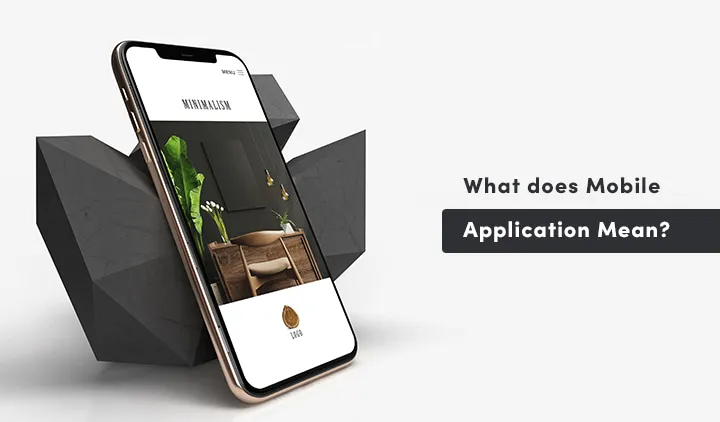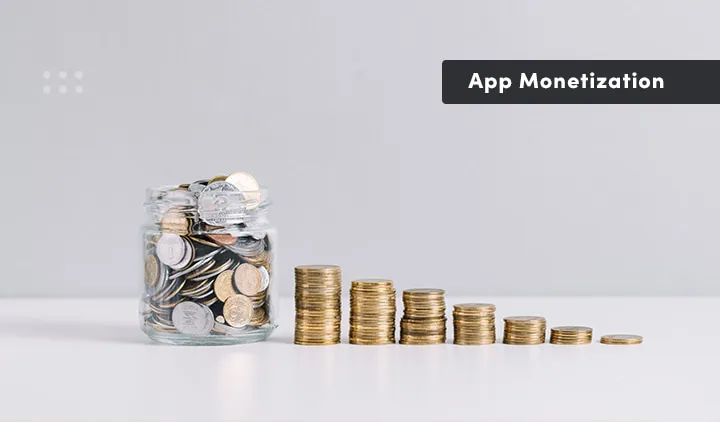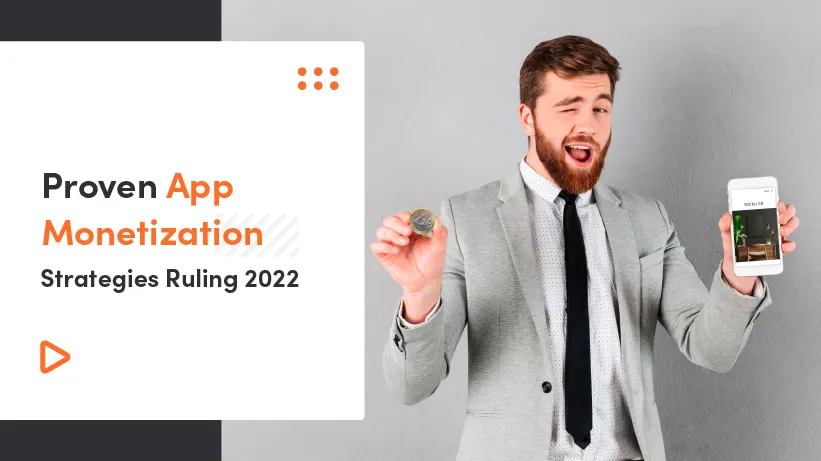Building an app has so many benefits. They give business owners the chance to make improvements to their company, they provide a platform for advertising and on top of that, they can earn you money through app monetization, and that’s why we’re here today.
Even if you don’t charge a penny to download or use your app, there are some great ways to make cash that you may not have even considered before. So, don’t go anywhere: we’re about to check out some proven app monetization strategies ruling 2022.
What is app monetization?
At its fundamental, app monetization refers to any act of making money from an app. But how do you do this if your app is free and you don’t charge for any in-app purchases?
It can be a complicated process, and is unlikely to result in instant revenue, especially with all the competition out there (right now, there are over 1.8 million apps in the App Store and over 2.5 million in the Google Play Store). But with some work, building an app can end up being very lucrative to your organization.
Selecting the right app monetization strategy is key to this, and the one that you opt for depends on your business model and a number of other criteria. And that decision is what we are here to help you make today.
What does mobile application mean?

The ‘app’ that everyone refers to is a much-shortened version of the phrase mobile application: a type of web application designed specifically for running on a mobile device, namely a smartphone or a tablet.
A mobile app is traditionally designed as a compact version of a website or web app for a desktop or laptop computer, and while these apps still exist, there are more and more apps popping up on Apple’s App Store and the Google Play Store that have no desktop counterpart, such is the popularity of the mobile device these days.
Apps have also traditionally had less functionality than a web app or website, but this is less frequently true nowadays as well. Smartphones and tablets become more and more powerful all the time (as do the operating systems that run them, such as Apple’s iOS and Google’s Android), which means that apps can be more powerful.
In fact, some mobile apps have more features than their website versions - you have to download the mobile app to be able to do certain things in the cases of some companies.
Perhaps the most popular type of mobile app is a ‘native app’. These are designed for a single mobile operating system, and have the benefit of high performance combined with a top user experience. Plus, they can be monetized and bring revenue to your organisation in ways that you might not have even considered.
Benefits of having an application vs mobile site
Some companies will run a mobile site side-by-side with a mobile app, as they know that not all users will be keen to download their app. This is a good tactic, as it does not exclude any potential customers.
You may have noticed, however, that a mobile site will constantly prompt you to download the app, and will not let you use certain functions as a further incentive. This is because companies really want you to download their app. But why? What are the key benefits? We’ve listed some of them below:
- More convenient and easier to use: the nature of iOS and Android is that it is easier to open an app (especially if you have it stored on your homepage) than it is to go into the browser of the device and enter a website.
- Faster: the speed of opening the app is added to by the fact that an app tends to run faster, as there are a number of background processes running on the likes of Google Chrome and Safari that do not occur in a standalone app.
- Stored personal settings: a user can update certain features of an app, such as notifications, tracking and more. This helps them to feel more personally connected to the app and therefore more likely to use it.
- Benefits and rewards for using it: to continue to bring in new customers, some companies may wish to offer further incentives to their customers for using the app, such as money off a particular product.
- More entertaining: app developers have less restrictions when they design a mobile app than they do when they design a mobile site, which means that they can do a better job of improving the visual aesthetics.
- Usually provides a better user experience: adding to that point, the overall user experience will be improved by the greater flexibility that a developer has, just as long as you have the right developer(s) working on your project.
90% of a users’ time on their smartphone is spent on a mobile app as opposed to a mobile browser. This goes to show how willing users are to download apps, especially in this day and age where device storage size is so high.
How to Identify Which Business Model is Right for You?
Earlier on, we mentioned that the way that you monetize your app depends on your business model. Now, it’s time to find out which business model is right for you. This can be done by answering a few simple questions:
- What problem is your app trying to solve and how? Can your app help people or is it for fun?
- What is unique about your app and would people pay for this? Do you have a USP? How can you demonstrate that in a way that makes customers feel like they need your app in their life?
- What else do you think your app users would be willing to pay for? How can you maximise your in-app purchases? Read on for more information on what that means and what it can do for your app.
- What business models do your competitors use and how well have they worked? Take a look at an app you admire in a similar field to the app you are making. What do they do right? How are they making money?
With the answers to these questions in mind, we can begin to think about how to choose a monetization method that works for your business and is likely to be the most lucrative.
How to choose the best monetization method
Later on in this article, we’re going to look at the different types of app monetization that are at your disposal. For the time being, however, let’s get thinking about the criteria we’ll need to evaluate to be able to make that decision.

- Competitor analysis: a great place to start is to find out what your competitors are doing. This does not have to be a business that’s on the same track as you - it could be a much more well-established one. In fact, this may be even better, as their choice of app monetization is more likely to be proven to work.
- Target audience analysis: when you think about your target audience, you’ll need to try to understand how they are going to spend their money. Are they likely to pay for a subscription, or are you better off running ads?
- According to the app type: does your app have something that you can sell within it in the form of an in-app purchase? Does the app warrant being a paid-for app in the first place? These are all questions where a correct answer is crucial.
The Difference Between Free Apps and Paid Apps
There is no instant answer to the question of ‘which type of app makes more money: free apps or paid apps?’ As we mentioned in the last section, it absolutely depends on what your business plan is.
However, learning about the differences between the two types of apps is super important to finding out which one is going to be the best choice for your business. Let’s take a look at the key points surrounding both free apps and paid apps.
For the record, apps that are free to download but offer in-app purchases tend to be classified under the ‘free apps’ umbrella, so that is what we are going to be doing today.
Free apps
- Attract more targeted users and increase visibility and downloads
- Less expensive and less complex than the paid ones
- Multiple monetization options in the future
- They help to buy a brand image
- A great way to optimize your app
Paid apps
- People are less likely to download them if they can’t try it out first
- Less potential clients
- Higher user expectations
- More expensive app development
- Limited monetization options
As we can see, there are a lot more benefits to free apps than paid apps. It’s not black and white: paid apps do have some small benefits such as the illusion of quality, but overall, a user is substantially more likely to download a free app than a paid one, even if it does require a subscription or an in-app purchase or two.
Try our developers.
Free for 2 weeks.
No risk. Just results. Get a feel for our process, speed, and quality — work with our developers for a trial sprint and see why global companies choose Selleo.
App Monetization Options

Over 90% of apps on the marketplace are free to download. So where do the developers make their money? Through other app monetization options is the answer.
Did you know much choice you have when it comes to monetizing your app? Well, there’s loads! You don’t have to charge customers to buy your app when there are a lot of other options at your disposal. Let’s take a look at each of them:
- Banner ads - ads displayed in various sizes at the top and bottom of the screen during usage.
- In-app video ads - a fixed length video, usually between 10 and 30 seconds, that plays at random.
- Interstitial ads - these appear at random across the full screen, and can be instantly closed by the user (or after a short period of time such as five seconds).
- Native ads - rare, but increasingly popular. This type of ad is designed to be super-integrated into the app itself as if it is actually a part of that app.
- Rewarded videos: this one is similar to the in-app video ads, except it allows users to unlock a reward such as an XP in a game.
How to use these methods to add monetization to your app
As you can tell by now, there is an awful lot of choice when it comes to making money from your app. You do not have to charge users right off the bat, especially as this is likely to make them avoid buying the app in the first place (unless it really is top tier!).
Take a look at the 10 monetization methods above and decide which of them could be best for the type of business you are running. You can take as many as you wish from the list, but don’t use too many as it can be a little overwhelming for users. If they feel like they are being overcharged, they are likely to go elsewhere.
If you need some help in designing your app and making as much money as possible out of it (don’t we all?), Selleo can help. We have a team of developers with plenty of monetization experience waiting to help you with your next app development project.
Summary
Hopefully, you’ve read this article with much excitement about how you can make money from your app in ways that you had not imagined before. This can be a real turning point for a business, as the cash flow can go back into making the app bigger and better than ever, which can in turn make you more money!
Lots of companies make the most out of app monetization but there are several out there that don’t give it enough time of day. This is a classic error, and a waste of potentially a lot of money.
Beat those companies today and put yourself in the driving seat to make as much money as possible from your next app by reaching out for a consultation right here at Selleo. Selleo can provide advice regarding monetizing your app, and can help with every stage of the development process so that you can bring in the highest number of paying customers.
Now that you have a better idea about what you want to do with your app and a taste for how to make some money from it, why not reach out for a consultation with Selleo today?





